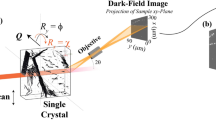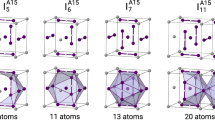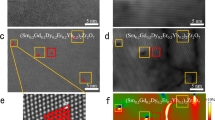Abstract
Amelinckx and Delavignette1 have recently studied non-metallic substances with layer structures, including talc and graphite, by transmission electron microscopy. They observed nets of widely dissociated dislocations particularly in talc. Splitting into more than two partial dislocations in such hexagonal layer substances had been forecast by Kronberg2. Grenall3 has observed dislocations in graphite previously, but did not observe dissociation into partials.
This is a preview of subscription content, access via your institution
Access options
Subscribe to this journal
Receive 51 print issues and online access
$199.00 per year
only $3.90 per issue
Buy this article
- Purchase on Springer Link
- Instant access to full article PDF
Prices may be subject to local taxes which are calculated during checkout
Similar content being viewed by others
References
Amelinckx, S., and Delavignette, P., Nature, 185, 603 (1960).
Kronberg, M., Acta Met., 5, 507 (1957).
Grenall, A., Nature, 182, 448 (1958).
Cannon, P., Graphite Meeting of the Soc. Chim. Phys., Paris (1960).
Author information
Authors and Affiliations
Rights and permissions
About this article
Cite this article
PHILLIPS, V., CANNON, P. Dislocations in Layer Structures. Nature 187, 313–314 (1960). https://doi.org/10.1038/187313a0
Issue Date:
DOI: https://doi.org/10.1038/187313a0
Comments
By submitting a comment you agree to abide by our Terms and Community Guidelines. If you find something abusive or that does not comply with our terms or guidelines please flag it as inappropriate.



